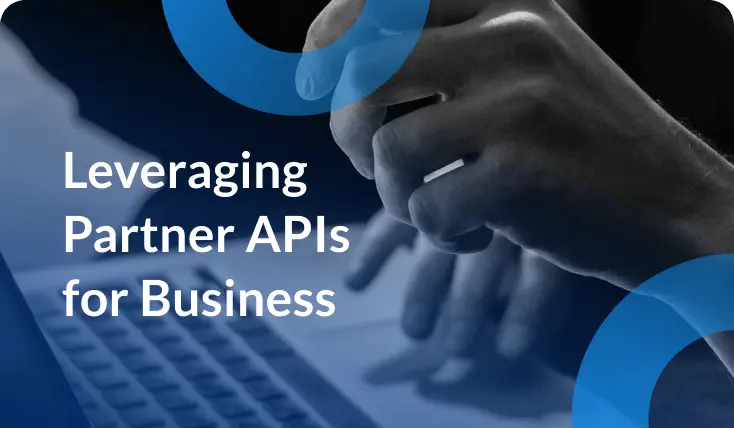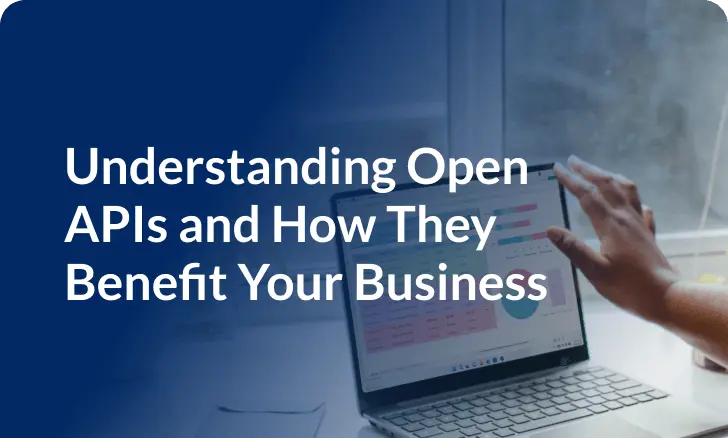Efficiency and adaptability are crucial for businesses to thrive and succeed. However, with constant digital changes, sprawling internal systems, and growing data silos, achieving these goals can be a challenge. This is where Internal APIs (Application Programming Interfaces) come in as a powerful solution.
APIs in general act as middlemen, allowing different software applications to communicate and exchange data with each other. With Internal APIs, they act as “bridges” that connect your internal systems, ensuring seamless data flow and streamlining your operations.
In this blog, we go more into internal APIs, how they work, and how they differ from other types of APIs. By understanding their value, you gain a better understanding of how this system can benefit your business and improve your company's productivity.
What’s an Internal API and How Do They Work?
In every organization, there are various departments: marketing, sales, and customer service. Each of these teams utilizes their own software applications for specific tasks. Internal APIs act as intermediaries, facilitating the communication and data exchange between these applications. They provide a standardized way for internal systems to request and receive information.
For instance, the HR and Finance departments of your organization can utilize the functionality of disbursement APIs or payments APIs to efficiently and accurately process various money requests. Whether it’s for payroll matters or supplier funding, these APIs can automate and facilitate money transactions, minimizing the need for manual accounting.
Of course, there are other ways your company can use Internal APIs for business operations. Some of the other key uses of Internal APIs are:
-

Data Integration
Internal APIs break down data silos by enabling applications to access and share data from different sources. This gives a unified view of your customers’ behavior, sales trends, or product usage, used for data-driven decision-making.
-

Streamlined Workflows
Internal APIs automate repetitive data exchange tasks, eliminating manual processes prone to errors. For example, an internal API can automatically update your customer’s information across all systems upon a successful purchase in the online store.
-

Faster Application Development
Internal APIs provide your developers with pre-built functionalities and data access points. This allows them to focus on building innovative features and applications quickly, accelerating your system’s development cycles.
-

Improved User Experience
Internal APIs give developers the power to integrate functionalities from diverse systems into user-facing applications. This creates a smoother and feature-rich user experience.
-

Scalability and Adaptability
Internal APIs enable easier integration of new applications and data sources as your business grows. This adaptability allows your digital ecosystem to evolve and meet changing needs. For instance, adopting an internal custom payment infrastructure can facilitate money transactions within your organization regardless of the scale.
Internal vs. External APIs
Often, there is confusion between Internal and External APIs. Your business may be unsure of which type of API to choose when upgrading your systems due to the similarities they offer. That said, here are some of their key distinctions to help you get a better understanding of what Internal APIs can offer your organization.
Accessibility
Internal APIs are private and restricted for use by authorized developers within your company's network. External APIs, on the other hand, are publicly available for anyone to access and integrate with.
Security
Internal APIs often handle sensitive data and require robust security measures like authentication and access controls—which is why secure internal payment transfer APIs are preferred for financial systems. On the other hand, external APIs necessitate even stricter security protocols due to potential access by unknown users.
Scalability and Reliability
Since External APIs serve a broader audience, they demand a more stable infrastructure to handle unpredictable demand and potential threats. For Internal APIs, they already employ stricter security measures—especially since they’re used for internal workflows.
Why Use Internal APIs?
The benefits of internal APIs extend far beyond streamlining communication.
Automating data exchange and eliminating manual tasks can increase your efficiency, improving the team’s productivity across departments. Plus, faster development cycles powered by pre-built functionalities within internal APIs allow your business to innovate quickly and stay ahead of the curve.
Other than that, Internal APIs facilitate data standardization and centralized control over access. This promotes a culture of data quality and responsible data use within your organization.
Overall, Internal APIs encourage collaboration between different departments. By providing a shared platform across the board, your business gives employees the power to access and utilize data and functionalities.
Partnering with Brankas for Internal API Open Finance Systems
Internal APIs represent a significant investment that can upgrade your digital infrastructure. However, building and maintaining them requires expertise and resources. And if you’re looking to upgrade your company’s financial systems, this is where Brankas’ solutions step in.
Brankas is a leading provider of internal API solutions for open finance. We offer a comprehensive suite of tools and services to help you design, develop, and manage your internal API ecosystem and integrate our banking-as-a-service products to enhance your operations.
Leverage Brankas's strong security features and user-friendly developer portals and merge our Internal APIs seamlessly into your business. This streamlined approach opens avenues for data-driven decisions for your success.









